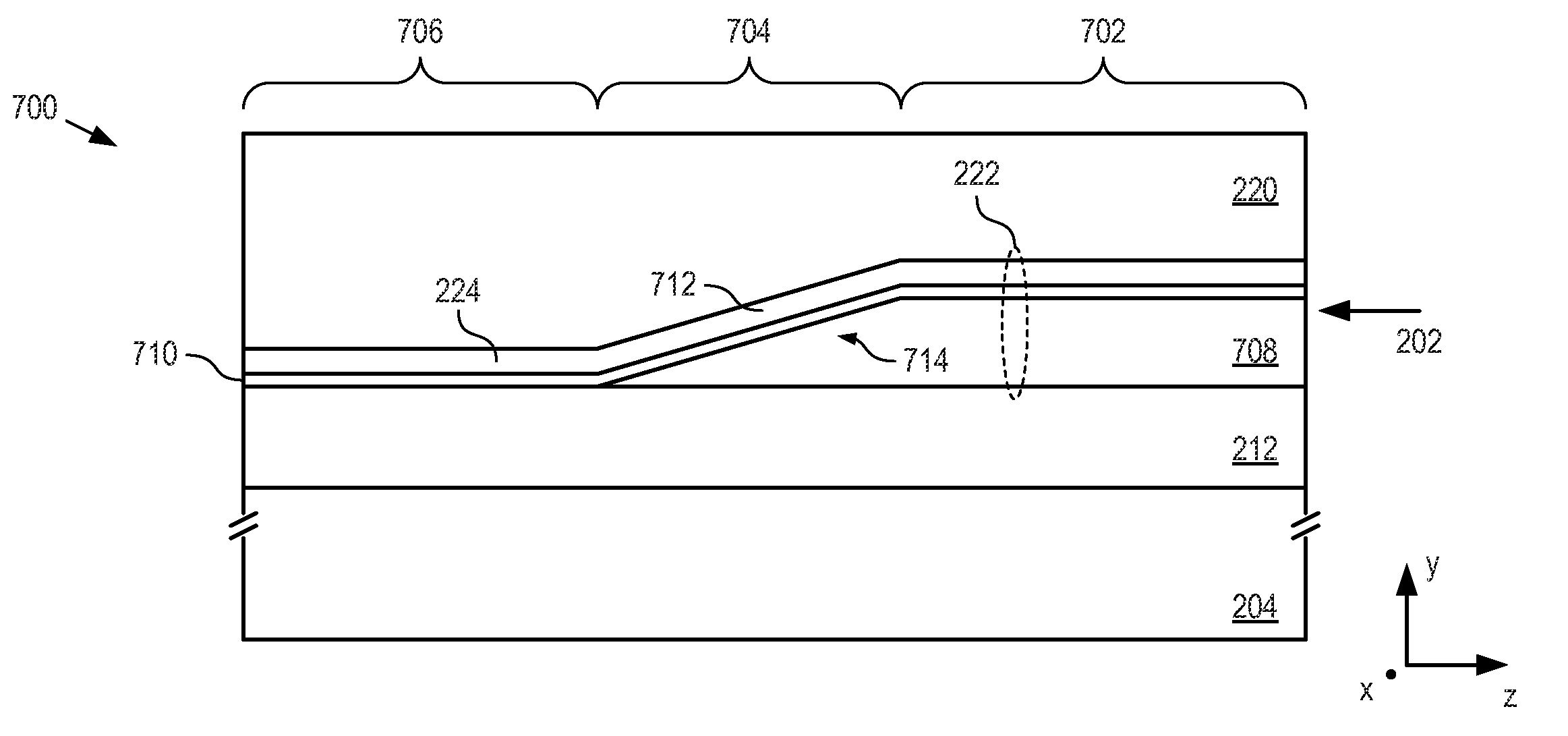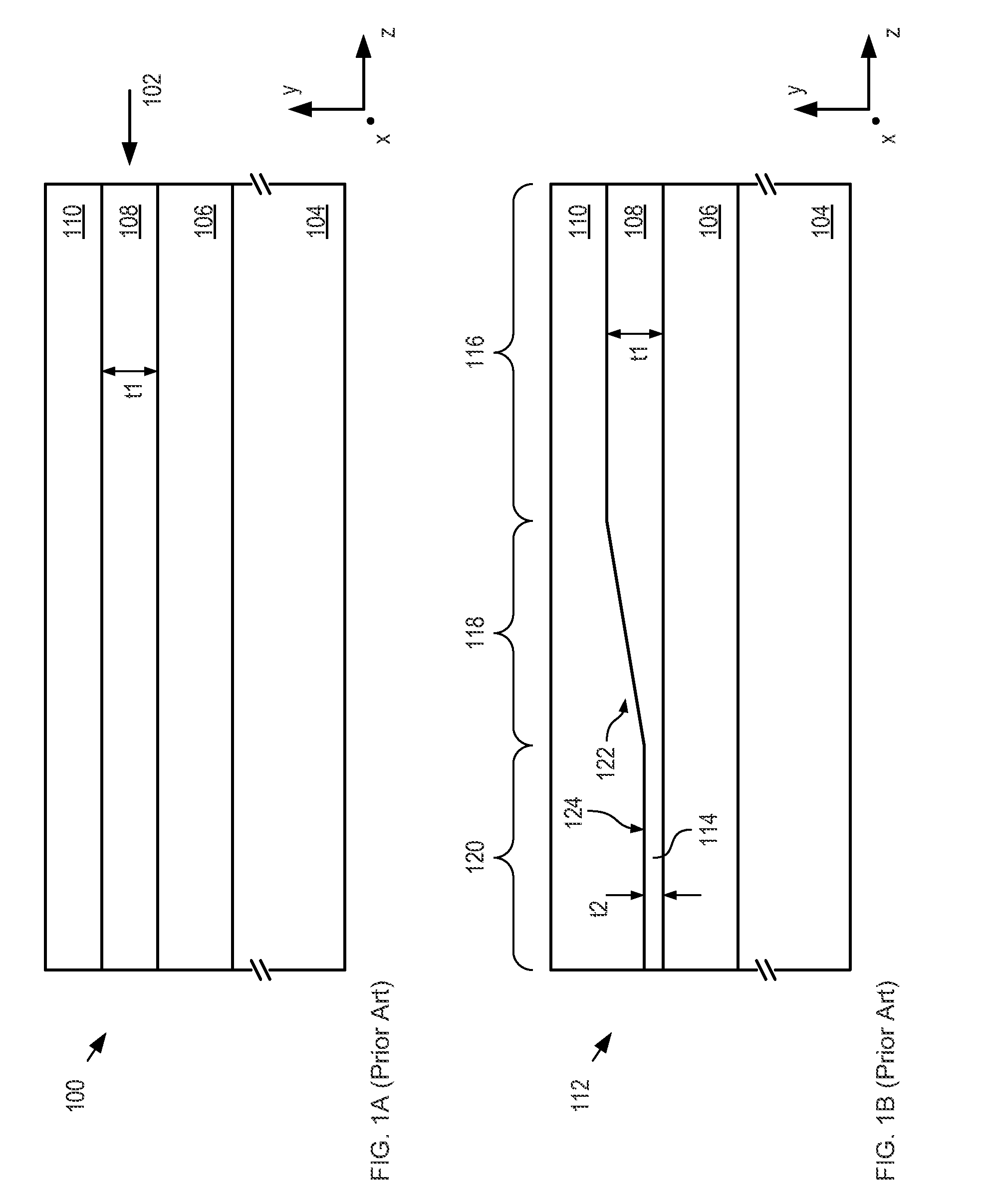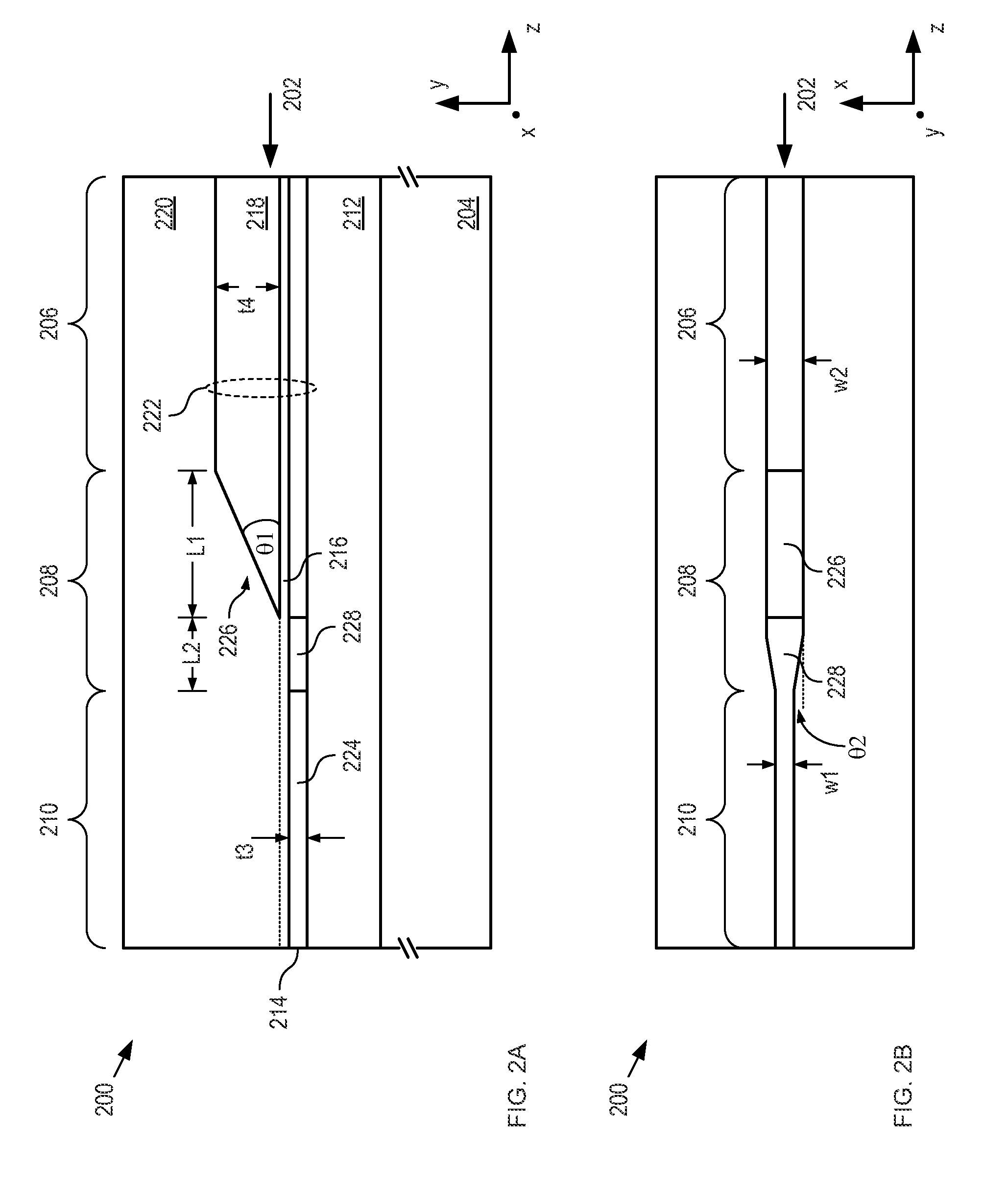Surface waveguide having a tapered region and method of forming
a surface waveguide and tapered region technology, applied in the field of integrated optics, can solve the problems of requiring a great deal of chip real estate to realize any significant functionality, light leakage out of the waveguide, and based on low-contrast waveguides, etc., to achieve improved reproducibility, high surface-waveguide density, and greater processing tolerance
- Summary
- Abstract
- Description
- Claims
- Application Information
AI Technical Summary
Benefits of technology
Problems solved by technology
Method used
Image
Examples
Embodiment Construction
[0033]FIG. 1A depicts a schematic drawing of a cross-sectional view of a conventional surface waveguide having a thick core layer in accordance with the prior art.
[0034]Waveguide 100 is a surface waveguide having a core that is patterned to define a stripe (hereinafter referred to as a “stripe waveguide”). Waveguide 100 comprises lower cladding 106, core layer 108, and upper cladding 110, which are formed on substrate 104. For the purposes of the present Specification, including the appended claims, the terms “Disposed on” or “Formed on” are defined as “exists on or above” an underlying material or layer either in direct physical contact or with one or more intervening layers. For example, if a material is described to be “disposed (or grown) on a substrate,” this can mean that either (1) the material is in intimate contact with the substrate; or (2) the material is in contact with one or more layers that already reside on the substrate.
[0035]Each of lower cladding layer 106 and upp...
PUM
 Login to View More
Login to View More Abstract
Description
Claims
Application Information
 Login to View More
Login to View More - R&D
- Intellectual Property
- Life Sciences
- Materials
- Tech Scout
- Unparalleled Data Quality
- Higher Quality Content
- 60% Fewer Hallucinations
Browse by: Latest US Patents, China's latest patents, Technical Efficacy Thesaurus, Application Domain, Technology Topic, Popular Technical Reports.
© 2025 PatSnap. All rights reserved.Legal|Privacy policy|Modern Slavery Act Transparency Statement|Sitemap|About US| Contact US: help@patsnap.com



